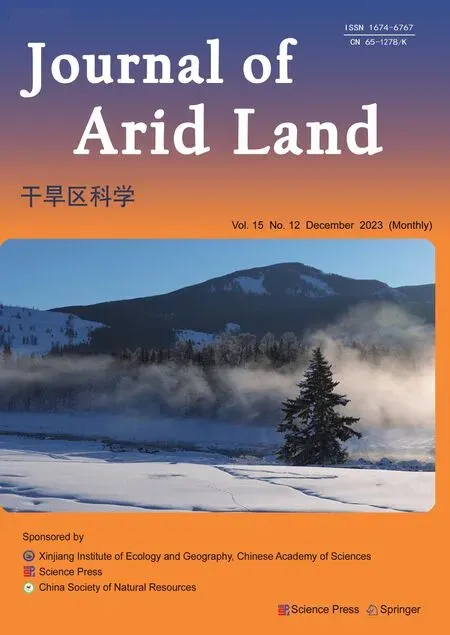Analyzing environmental flow supply in the semi-arid area through integrating drought analysis and optimal operation of reservoir
Mahdi SEDIGHKIA, Bithin DATTA
College of Science and Engineering, James Cook University, Townsville 4811, Australia
Abstract: This study proposes a novel form of environmental reservoir operation through integrating environmental flow supply, drought analysis, and evolutionary optimization.This study demonstrates that simultaneous supply of downstream environmental flow of reservoir as well as water demand is challenging in the semi-arid area especially in dry years.In this study, water supply and environmental flow supply were 40% and 30% in the droughts, respectively.Moreover, mean errors of supplying water demand as well as environmental flow in dry years were 6 and 9 m3/s, respectively.Hence, these results highlight that ecological stresses of the downstream aquatic habitats as well as water supply loss are considerably escalated in dry years, which implies even using environmental optimal operation is not able to protect downstream aquatic habitats properly in the severe droughts.Moreover, available storage in reservoir will be remarkably reduced (averagely more than 30×106 m3 compared with optimal storage equal to 70×106 m3), which implies strategic storage of reservoir might be threatened.Among used evolutionary algorithms, particle swarm optimization (PSO) was selected as the best algorithm for solving the novel proposed objective function.The significance of this study is to propose a novel objective function to optimize reservoir operation in which environmental flow supply is directly addressed and integrated with drought analysis.This novel form of optimization system can overcome uncertainties of the conventional objective function due to considering environmental flow in the objective function as well as drought analysis in the context of reservoir operation especially applicable in semi-arid areas.The results indicate that using either other water resources for water supply or reducing water demand is the only solution for managing downstream ecological impacts of the river ecosystem.In other words, the results highlighted that replanning of water resources in the study area is necessary.Replacing the conventional optimization system for reservoir operation in the semi-arid area with proposed optimization system is recommendable to minimize the negotiations between stakeholders and environmental managers.
Keywords: optimization; reservoir operation; droughts; metaheuristic algorithms; environmental flow regime
1 Introduction
Water supply and generating hydropower are the main responsibilities of reservoir (Altinbilek,2002; Bilgili et al., 2018; Liersch, 2019).However, river ecosystems are threatened by rising water demand and weakening water quality due to increasing population (Postel, 1998; Liyanage and Yamada, 2017).Hence, the concept of environmental flow has been defined to protect the river habitats.Basic concepts of the environmental flow regime have been reviewed in the literature (Zeiringer et al., 2018).Several methods have been developed to assess environmental flow regime including historic flow methods, hydraulic rating methods, physical habitat methods,and holistic methods (Jowett, 1997; King et al., 2000; Tharme, 2003).Ecological-based methods can assess environmental flow regime considering the regional ecological values.For example, an applicable model is developed to assess the environmental flow for restoring riparian vegetation(Shafroth et al., 2017).Furthermore, conditional probability networks have been utilized as a designer for assessing environmental flow (Horne et al., 2017).Using functional flow approach is a novel solution for determining environmental flow regime (Lane et al., 2020).Satisfying the environmental flow regime might be a complex task for engineers especially in the dry years.In other words, simultaneous supply of water demand and environmental flow might be challenging.Some recent studies highlighted the optimization of the environmental flow for better environmental management of the river basins (Dehghanipour et al., 2020; Sedighkia et al., 2021).Application of decisions-making model for environmental management of the water resources has been highlighted in the literature as well (Liu et al., 2008).Integrating water resource management and environmental modelling is required for facing environmental challenges(Young et al., 2003; Paredes-Arquiola et al., 2014).
Satisfying the downstream environmental flow of reservoirs in droughts might be highly challenging.In the conventional form of reservoir operation, the environmental flow regime is not considered.Optimization of reservoir operation has been reviewed in the literature (Allawi et al.,2018).Some previous studies focused on reservoir management in drought condition (Spiliotis et al., 2016).Hashimoto et al.(1982) proposed a simple and applicable form of loss function to optimize reservoir operation that minimizes difference between target or water demand and release from the reservoir.Datta and Burges (1984) highlighted this function as two-sided loss function.Moreover, they pointed out that storage is another effective parameter for the optimal reservoir operation.In other words, loss of storage must be considered in reservoir operation.This loss function has been utilized in many studies (Ehteram et al., 2017, 2018; Zamani et al., 2017).Optimization methods have been improved in recent years.A comprehensive review on the optimization methods is available in the literature (Sun et al., 2019).Linear programming (LP)and non-linear programming (NLP) have been used to optimize reservoir operation (Arunkumar and Jothiprakash, 2012; Zhao et al., 2014).However, using advanced evolutionary algorithms are highly effective for increasing the efficiency of optimization (Ahmad et al., 2014).Evolutionary algorithms have been widely utilized to optimize reservoir operation in recent years(Bozorg-Haddad et al., 2017; Salazar et al., 2017; Yaseen et al., 2019; Zarei et.al, 2019).Optimization methods are applicable in calibration and validation of hydrological models as well(García-Romero et al., 2019).Recent studies highlighted the optimization of environmental flow at downstream of reservoirs (Yin et al., 2012; Cai et al., 2013; Horne et al., 2017).However,integrating optimal reservoir management and environmental flow supply is needed to minimize the negotiations among stakeholders.Water resources engineers defined the environmental flow in water allocation models.The initial systems developed a simulation framework in which water flow, water quality, fish habitat quantity and quality, anadromous fish populations, and economics were highlighted (Flug Bartholow and Campbell, 1999).However, using environmental flow regime in the structure of water resources optimization models was essential.Thus, water resources management, water quality, and habitat analysis tools were developed in the structure of decision support system (Olden and Naiman, 2010; Paredes-Arquiola et al., 2014).Moreover,some studies used historic flow methods to assess the environmental flow at downstream of reservoirs (Yin et al., 2012; Payne and Jowett, 2013).
Highlighting contribution and necessities of this study for covering the research gap is essential.Several methods have been developed in reservoir operation optimization in recent decades(Dobson et al., 2019).However, considering water supply as the main objective of optimization is a challenge currently.Impacts of climate change on the rainfall events and consequently extreme events such as droughts and floods have been highlighted in recent studies (Duan et al., 2016,2019, 2022).These studies pointed out that increasing extreme events such as severe droughts or floods is highly probable due to climate change.Hence, modifying the operation models of reservoir is essential for facing environmental challenges such as environmental flow supply in the dry years.This study is an effort to cover this research gap by proposing and evaluating a novel form of the optimization system for reservoirs in semi-arid areas in which environmental flow and drought analysis are integrated in the objective function and the optimization system,respectively.
Beware of it! The prince read and bared his head and lifted his hands in supplication to Him who has no needs, and prayed, O Friend of the traveller! I, Thy servant, come to Thee for succour
The present study contributes to improve the optimization process of environmental flow in reservoir operation models by defining a new form of objective function, in which drought analysis is linked to the model for optimizing the environmental flow regime in the dry years.In fact, linking the drought analysis and reservoir operation model might be helpful for improving environmental management.The present study defines two regimes of environmental flow consistent with ecological protection scenarios including the minimum environmental flow regime and ideal environmental flow regime.The ideal environmental flow regime was defined as the target in optimization model.In contrast, the minimum environmental flow regime was defined by penalty function.This novel system can balance environmental requirement and water supply optimally.To sum up, the objectives and contributions of the present study could be mentioned as follows: (1) developing a new form of the objective function of reservoir operation,in which two environmental flow regimes including the minimum environmental flow regime and target of environmental flow regime are defined in the structure of optimization model.This new form of objective function is able to manage the environmental flow in different ecological protection scenarios and water supply simultaneously; and (2) incorporating drought analysis with reservoir operation optimization for managing challenges due to severe droughts in the operation of reservoir for satisfying environmental flow regime.
But, behold! they had vanished, he knew not how or where! Then he leaped in the air to try the Shoes of Swiftness, and they carried him more swiftly than the wind, over the warm blue sea, over the happy lands of the south, over the northern peoples who drank mare s milk and lived in great wagons15, wandering after their flocks
2 Application and methodology
Figure 1 displays the workflow of proposed method.Drought analysis is carried out by the stream drought index (SDI) in the first step.Then, we computed mean monthly flow for average year in the dry years based on the results of drought analysis.Two defined environmental flows including the minimum environmental flow and ideal environmental flow regimes are then added to the optimization model.Moreover, other constraints on reservoir management are added as well.In the next step, different metaheuristic algorithms are applied to optimize releases from reservoir.Finally, the best method for optimizing reservoir operation is selected.
2.1 Study area
The proposed method was applied in the Latian Dam (one of the largest dams in Iran) that is responsible for water supply of capitol territory.This dam has been constructed on the Jajrood River, where originates from the Alborz Mountains toward the Salt Lake in southern Tehran Province, Iran.Satisfying environmental flow in the droughts is a serious challenge at downstream of the Latian Dam.Environmental flow is necessary to protect valuable downstream habitats.The available flow in some months is not adequate to satisfy water demand and environmental flow.The reservoir has a significant role to satisfy demands in this basin.Previous studies corroborated that satisfying water demand and environmental flow is not possible without using reservoir.Many native aquatic species are living in the downstream river in which enough instream flow is needed.Hence, environmental flow regime is highly important in the study area.In recent years, negotiations between stakeholders and environmental managers have been escalated in this river basin.Current environmental challenges threaten regional ecological values drastically.Figure 2 displays the location of Latian Dam and upstream river basin.The minimum operational storage is 15×106m3in this reservoir, and the maximum possible storage is 95×106m3.The following datasets were used to implement the proposed method in this study (Table 1).
As a review on pre-processing data analysis (inputs of optimization model), the hydrological data or recorded inflow to reservoir were analyzed through drought analysis as presented in the Section 2.2.Moreover, evaporation data were analyzed through monthly averaging to obtain monthly time series of evaporation from reservoir.Environmental flow time series recommended in previous studies (Abdoli and Sedighkia, 2019) was directly applied in the optimization model.Moreover, water demand time series was extracted from previous studies by regional water authority.Post-processing data analysis (outputs of optimization model) includes computing measurement indices (Section 2.5) of water supply, storage, and environmental flow to evaluate the performance of reservoir.
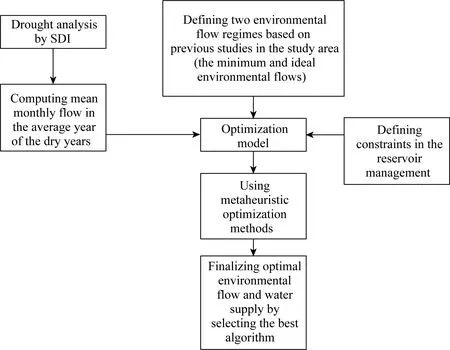
Fig.1 Workflow of this study.SDI, stream drought index.

Fig.2 Location of the Latian Dam and upstream of the Jajrood River basin

Table 1 Introducing datasets
2.2 Drought analysis
We utilized SDI to analyse droughts in the study area.Standardised precipitation index (SPI) is useable for analysing the meteorological droughts.However, this index is not applicable in the assessment of drought in rivers.Researchers developed SDI based on analogy between meteorological drought analysis and hydrological drought analysis in rivers (Akbari et al., 2015).In the first step, we need to calculate cumulative stream flow volume (Vi,k)based on Equation 1.
whereQi,jis the flow (m3/s);kis the period (k=1, 2, 3, 4) of drought analysis, which might be three to twelve months; andiis the months (i=1, 2, …, 12).In this study, we did the drought analysis based on the twelve-month period.In the next step, it is needed to use Equation 2 to calculate SDI that could be seen as follows:
wherevis the cumulative stream flow volume (m3/s); andVandSare the mean and standard deviations of cumulative stream flow volume (m3/s), respectively.More details on SDI have been presented in the literature (Akbari et al., 2015; Liu et al., 2015).Table 2 displays defined criteria to assess hydrological condition as non-drought to extreme drought (Akbari et al., 2015).

Table 2 Criteria for definition of SDI
2.3 Optimization model
Objective function (OF) is a key component in each optimization model.Equation 3 shows the OF in this study.Equation 3 is a loss function in which differences between defined water demand and release from reservoir for water supply is minimized.Moreover, difference between ideal environmental flow regime for the river ecosystem and release for environmental flow by reservoir is minimized as well.The general form of this loss function is the same with previous studies.However, the component of environmental flow is added to the function.
whereIEtis the ideal environmental flow (m3/s);OEtis the optimal environmental flow (m3/s);Dtis the water demand (m3/s);RDtis the release for demand (m3/s);tis the time step of the optimization model in monthly scale; andTis the horizon time (month).Some constraints must be added to the optimization model including constraints on the minimum operational storage,maximum possible storage, minimum environmental flow, maximum water demand, and environmental flow as follows: (1) storage must not be more than the maximum possible storage;(2) storage must not be less than the minimum operational storage; (3) release for water demand must not be more than water demand; (4) release for environmental flow must not be more than ideal environmental flow; and (5) release for environmental flow must not be less than the minimum environmental flow.We applied the metaheuristic algorithms to optimize reservoir operation.And we applied the penalty function to convert a constrained optimization problem to unconstrained one for using evolutionary algorithms (Baba et al., 2015).This method has been extensively utilized in reservoir operation optimization (Al-Jawad and Tanyimboh, 2017; Takada et al., 2019).We added four penalty functions to the optimization system.Equation 4 displays two penalty functions for storage management.
whereStis the storage (106m3);Smaxis the maximum possible storage or capacity of reservoir(106m3);Sminis the minimum operational storage (106m3);c1 andc2 are constant coefficients(dimensionless);P1 is the penalty function related to the maximum storage or capacity of reservoir (dimensionless); andP2 is the penalty function related to the minimum operational storage of reservoir (dimensionless).In fact, these two functions increase the value of OF as the penalty function in optimization system to maintain storage between the minimum operational storage and the capacity of reservoir.In these equations,c1 andc2 were achieved through initial sensitivity analysis.Equation 5 displays two penalty functions for water demand.Moreover,Equation 6 displays added penalty functions for environmental flow.
After this they found that they were very hungry, for one cannot live on love, any more than on air, and then the old woman s lamentations were louder than before
whereRDiis the release from reservoir for water supply (m3/s).
Then she sat down and cried, but her tears fell just on the spot where a rose bush had sunk, and when her warm tears watered the earth, the bush came up in full bloom just as it had been before
whereItis the inflow to reservoir (106m3);SPtis the overflow (106m3);Vtis the evaporation (m);andAtis the surface area of reservoir (m2).
A few days later, I returned to the school to visit. I noticed Ronny on a bench near the playground, the book open in his lap. I could see his lips move as he read to himself
whereTRtis the target flow (m3/s).
2.4 Metaheuristic optimization
Three different evolutionary algorithms were used in the present study including particle swarm optimization (PSO), biogeography-based optimization (BBO), and differential evolution (DE)algorithm.General methodology of these algorithms is the same.However, different strategies for searching solution spaces will be used.It is essential to review the methodology of each algorithm briefly.PSO is able to solve an optimization problem considering a population of candidates or solutions, and moving particles or solutions in the search-space by changing particle's position and velocity (Kennedy and Eberhart, 1995).BBO is inspired by mathematical models of biogeography in which speciation (the evolution of new species) and the migration of species(animals, fish, birds, or insects) between islands, and the extinction of species could be simulated(Simon, 2008).DE could be applied for multidimensional real-valued functions.And it does not utilize the gradient of problem being optimized (Qin et al., 2008).Figures 3-5 show flowchart of used algorithms in this study.Moreover, some previous studies addressed the steps of optimization by evolutionary algorithms (Ebtehaj and Bonakdari, 2016, 2017; Qasem et al., 2017;Ebtehaj et al., 2019).We selected these three algorithms in this study to compare the performance of different algorithms.We have chosen algorithms with different origins to investigate the impact of changing methodology for finding the best solution in optimal release from reservoir.In the optimization process, we considered the number of iterations as termination criteria.Based on several experiments by different algorithms, after 5000 iterations the optimization algorithms could be convergence.Thus, selecting 10,000 number of iterations is a reliable termination criterion for applying evolutionary algorithms.
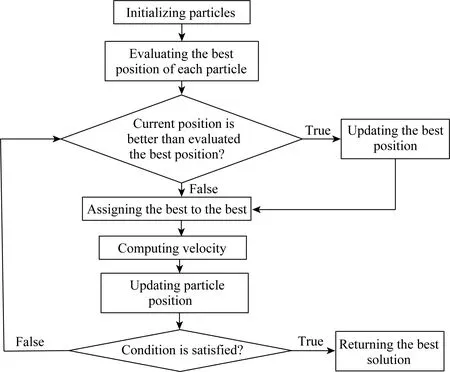
Fig.3 Flowchart of particle swarm optimization (PSO)
2.5 Measurement indices
Two different measurement indices were used including reliability index and root mean square error (RMSE).Reliability index was used to measure the robustness of optimization methods in terms of satisfying water demand and environmental flow during simulated period (Ehteram et al.,2018b; Yaseen et al., 2018).Moreover, RMSE was utilized to measure the performance of optimization methods in terms of water supply and satisfying environmental flow, and to measure the performance of optimization methods in terms of storage benefits compared with optimal storage.It should be noted that the reliability index is not useable for measurement of system performance in terms of storage.The optimal storage in each time is important to maximize benefits from the storage.
Equations 9 and 10 display general form of these indices in this study.

Fig.4 Flowchart of differential evolution (DE) algorithm

Fig.5 Flowchart of biogeography-based optimization (BBO)
It should be noted that total of release for environmental flow and overflow might be defined as total environmental flow to downstream river.We calculated overflow based on the maximum storage of reservoir by Equation 8.
Reservoir storage was updated by Equation 7.
2.6 Data analysis
In all the world, there is no one else exactly like me. There are people who have some parts like me but no one adds up exactly like me. Therefore, everything that comes out of me is authentically2 mine because I alone choose it.
3 Results and discussion
Figure 6 displays the result of drought analysis.Based on drought analysis, we estimated monthly reservoir inflow by averaging dry years as displayed in Figure 6.We defined environmental flow regime based on previous regional study (Abdoli and Sedighkia, 2019), which was assessed by integrated habitat simulation method.Two environmental flow regimes were defined in this study.This strategy is helpful to maximize the flexibility for environmental management of reservoir.A minimum environmental flow regime was defined in which the minimum ecological suitability could be provided.In other words, instream flow should not be less than this regime in all the time steps.However, it is not able to provide the ideal habitat suitability.The minimum environmental flow regime is able to guarantee 50% of maximum weighted useable area for fishes as target species in the study area.Moreover, the ideal environmental flow regime is able to provide high ecological suitability for aquatic organisms in the study area in which more than 75% of weighted useable area could be protected.More details regarding the habitat simulation could be reviewed in the literature (Bovee et al., 1998; Nalamothu, 2021).
Supply of ideal environmental flow regime in the study area is the best option for environmentalists.However, it might not be possible in dry years due to lack of enough flow in the river.Hence, using optimization model of environmental flow is helpful for optimal water supply and environmental needs.However, the environmental flow must not be less than proposed minimum flow regime in all time steps.Figure 7 displays four time series including water demand, ideal environmental flow, the minimum environmental flow, and reservoir inflow.Reservoir inflow was considered as the mean monthly flow in the dry years.The purpose of this study is to evaluate environmental flow supply in the dry years in which the optimal reservoir management might be critical.Hence, normal years were not considered in this study.Figure 7 demonstrates that water demand and ideal environmental flow were higher than that of inflow of reservoir in several months of the year.Thus, satisfying water demand and environmental flow might increase the conflict of interests between stakeholders and environmental managers.Hence,the optimization system is able to provide a fair balance between water supply and environmental flow supply, which is necessary for optimal management of the Latian Dam.
The Grimms offer a different ending in which a huntsman happens by and rescues the grandmother and Little Red Riding Hood by disemboweling the wolf. The two females escape from the wolf unharmed, like Jonah from the belly32 of the whale. The huntsman then sews rocks back into the wolf s stomach for punishment. The huntsman in this version represents patriarchal protection and physical superiority.
Figure 8 displays the result of optimization in terms of water supply.The performance of different algorithms demonstrates that they are able to supply part of water demand.Using alternative water resource in the dry years for water supply is essential in this region.Moreover, results indicate that water supply might be a huge problem for developing urban areas.Available water resource such as Latian Dam is not able to supply demands in the dry years in current condition.Hence,sustainable development of urban areas should be based on current limitations of water supply.Environmental flow supply is a challenge in the study area, particularly in summer.Figure 9 displays the optimal release for environment by different algorithms compared with ideal and the minimum environmental flow regime at downstream river ecosystem.
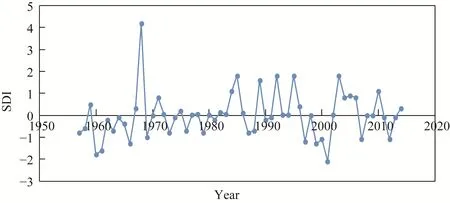
Fig.6 Result of stream drought index (SDI)
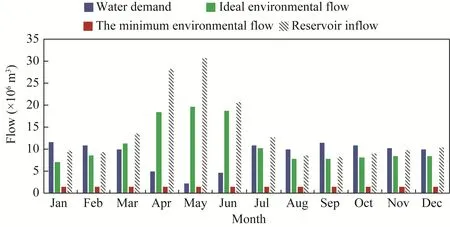
Fig.7 Time series of water demand, ideal environmental flow, the minimum environmental flow, and reservoir inflow
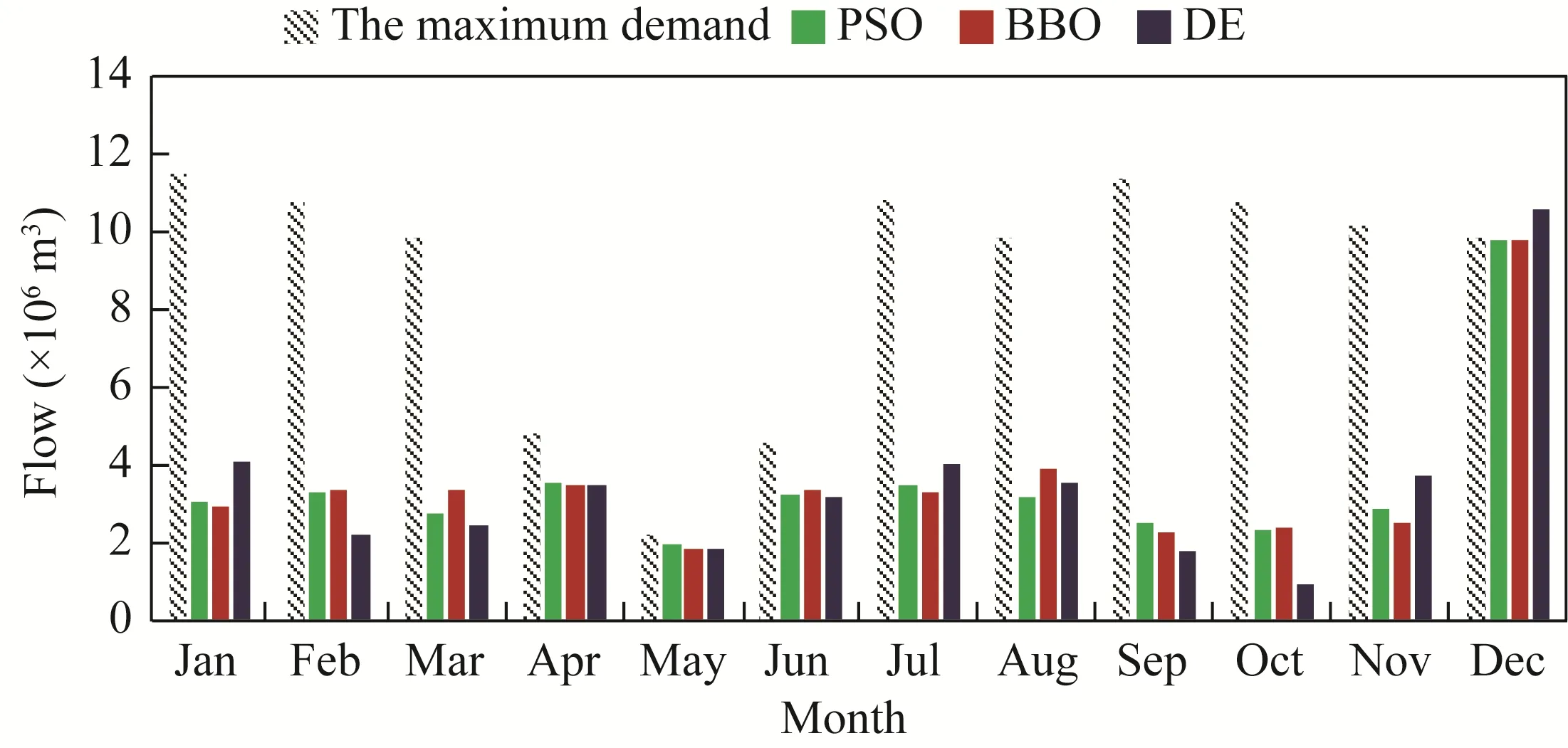
Fig.8 Optimal release for water demand by different evolutionary algorithms.PSO, particle swarm optimization;BBO, biogeography-based optimization; DE, differential evolution algorithm.The abbreviations are the same in the following figures.
Satisfying environmental flow (Fig.9) in the dry years is challenging because difference between optimal release for environment by all the evolutionary algorithms and ideal environmental flow is considerable.Significant difference between ideal environmental flow and optimal release from reservoir indicates that challenges for protecting river habitats at downstream must be noticed in reservoir operation.However, release for environment in all the months is more than the minimum environmental flow.Thus, the performance of penalty function is robust.More discussion on supply of environmental flow and water demand is needed by using measurement indices.
Figure 10 displays the optimal storage in reservoir.Results demonstrate that performance of algorithms is different in term of storage in reservoir.Some points must be noted in optimal storage of reservoir.First, droughts might escalate the challenges of storage management.In fact,optimal storage is not accessible during dry years or reducing storage benefits is inevitable.However, results demonstrate that performance of the minimum storage penalty function was perfect.Storage is not less than the minimum operational storage in all time steps.
And when at last the time came for him to go, and he asked, as he had so often asked before, Beauty, will you marry me? She answered softly, Yes, dear Beast
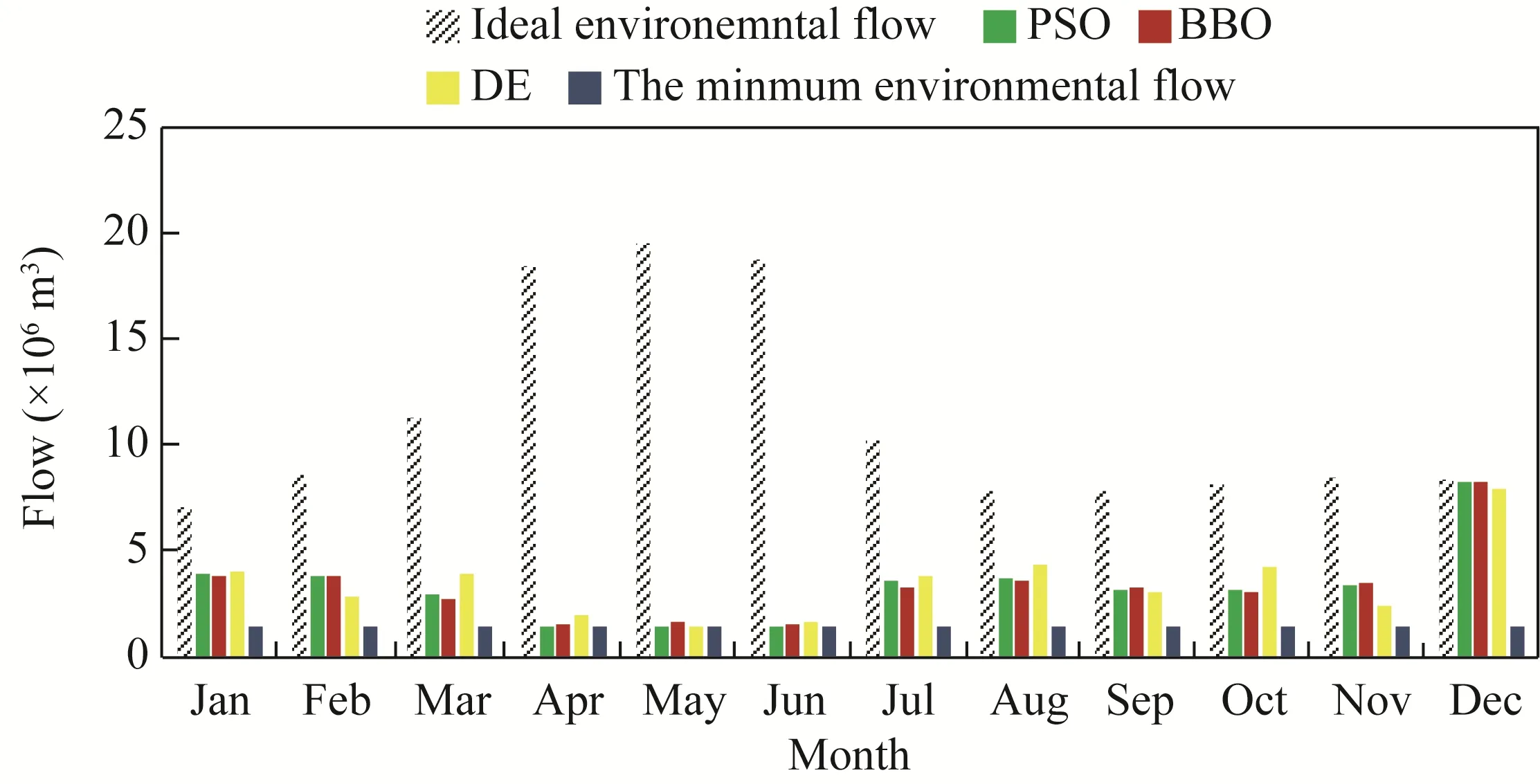
Fig.9 Optimal release for environment by different evolutionary algorithms
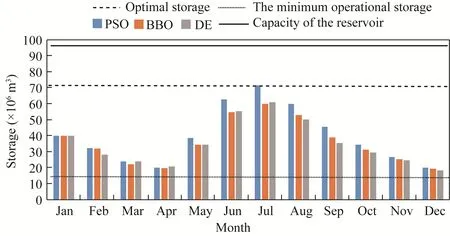
Fig.10 Optimal storage in reservoir
When Cola-Mattheo brought this answer back to the snake, the little creature didn t seem the least put out, but said, To- morrow morning, before sunrise, you must go to the wood and gather a bunch of green herbs, and then rub the threshold of the palace with them, and you ll see what will happen
It seems that having a new plan for water supply in this river basin is essential due to lack of enough water for satisfying water demand and environmental flow simultaneously.Table 3 displays RMSE for supply of water demand and environmental flow.Close performance of all algorithms is clear in this table as well.It seems that optimization model in the developed form of present study has better performance in terms of water supply compared with environmental flow.RMSE for water demand is lower than that for environmental flow.RMSE for water demand is 6 m3/s.However, RMSE for environmental flow is 10 m3/s approximately.
Table 3 displays RMSE of storage for different algorithms.The minimum RMSE is related to PSO that indicates the better performance of this algorithm to optimize storage loss in reservoir.Based on result, PSO is the best optimization method in this study.Performance of different algorithms in terms of water supply and environmental flow is similar.Hence, performance of algorithms in terms of optimal storage is effective to select the best algorithm for reservoir operation.Proposed method is applicable in terms of two aspects.First, it is able to provide a balance between water supply, environmental flow, and storage.In other words, it reduces the losses of system in terms of storage and water supply.Using the proposed method is useful for better management of reservoir in the challenging situations of flow availability.The easiest option for managers is to reduce environmental flow in droughts.However, an optimal release for water demand and environment is essential.Furthermore, the proposed method is useful to improve water planning in the river basin in which environmental degradations will be minimized.It is possible to use water conveyance project from other water resources to reduce losses in some cases.The performance of different algorithms is the same in this study.However, PSO is slightly better than other algorithms.It is a classic and old algorithm.It seems that using new generation algorithm might not improve performance of optimization system.However, many previous studies claimed that using new generation algorithms improves performance of reservoir operation optimization (Bozorg-Haddad et al., 2016).This study indicates that changing objective function of reservoir operation affects performance of optimization solutions.It seems that improvement of objective function of reservoir operation is necessary based on environmental requirements.We recommend focusing on improvement of objective function that is able to consider the environmental requirements in reservoir operation optimization.
Table 3 displays reliability index for water supply and environmental flow.Similar performance of different algorithms could be observed in this figure.Reservoir can supply 40% of water demand in the dry years.In other words, challenges are considerable in optimal operation of reservoir in droughts.Reliability of environmental flow supply is 30%.Hence, suitability of river habitat at downstream will be diminished due to lack of instream flow.Optimization model is able to provide a fair balance between water demand and environmental flow in the dry years.In other words, it reduces the reliability of water supply and environmental flow supply in droughts for balancing demands.It is not favorite in this river basin in terms of environmental requirements.However, it sounds that it is the best solution for a challenging period.Some previous studies demonstrated that the number of dry years might increase in future periods due to the impact of climate change (Rezaee et al., 2013).Hence, applying the proposed method is highly helpful for better management of droughts in the future years.However, impact of climate change on the stream flow might not be the same in different rivers.For example, some studies reported increasing stream flow due to the impact of climate change.Generally, extreme events will be increased in the river basin.The proposed framework in this study is useful for general management of environmental flow in the future periods.For instance, climate change models are usually able to predict stream flow in the 20-a period such as 2020-2040 or 2040-2060.Predicted monthly flows could be used in structure of drought analysis for obtaining mean monthly flow in the dry years in different future periods.Then, it can be evaluated how the climate change would alter the ecological status of river ecosystem in optimal reservoir operation.Stream flow might be changed in each year.However, engineers averagely define environmental flow based on hydrological condition.Hence, using the proposed framework for managing environmental flow in most optimistic and pessimistic scenarios is recommendable.

Table 3 Measurement indices of reservoir operation optimization
At the first glance, it seems that considering a constraint on the maximum release for environment is unnecessary.In other words, more release for environment is favourite, if possible.It should be noted that this study provides a general framework for optimizing environmental flow regime in which different environmental flow assessment methods could be utilized.These methods do not consider a direct relationship between biological response and river flow.Hence,increasing environmental flow might not be favourite in all the conditions.The environmental flow should not be more than ideal environmental flow regime.Old methods such as hydrological methods might not need this constraint due to considering a direct and linear relationship between biological response and river flow.However, the proposed optimization method in his study is a general framework that could be linked with all the environmental flow assessment methods.Hence, adding a constraint for the maximum release of environmental flow is necessary in this study.
Some points should be addressed clearly.First, why we applied different algorithms in the optimization of environmental flow and why the outputs by different algorithms are not the same.One of the drawbacks of metaheuristic algorithms is inability to guarantee the global optimization that means the algorithms do not guarantee the global optimization particularly in the complex objective functions (Dhiman et al., 2021).The reservoir operation function is one of the complex functions.It is recommendable to apply different algorithms and select the best solution among proposed solutions by the algorithms.As could be observed in the outputs of this study, the proposed solutions by different algorithms for optimizing reservoir operation is not the same.Thus, the algorithms cannot guarantee the global optimization for the developed objective function.Hence, difference between solutions by algorithms is not strange.Moreover, we only used mean monthly flow in the dry years and outputs of normal years are not computed and reported.The purpose of this study is to evaluate environmental flow in droughts, which is a critical condition in the management of reservoir.Computational complexity is one of the problems in application of optimization algorithms.According to official definition, it can be defined as given time and memory to optimization system for finding the best solution (Curry and Dagli, 2014).One of the advantages of proposed method is the low computational complexities that might increase the applicability and efficiency of the method in the future studies and projects.
In hydrological studies, discussing on the sources of uncertainties is helpful.In this study, one of the main sources of uncertainties is inflow data to reservoir.In fact, changing inflow to reservoir due to climate change in the future can make uncertain results and recommendation.Climate change models might have considerable uncertainties.Hence, analysing reservoir operation considering impacts of climate change might not be reliable due to uncertainties of inflow prediction.Furthermore, changing evaporation from reservoir is another source of uncertainties.However, it might have minor effects on reservoir operation analysis compared with uncertainties of inflow time series.Also, we assessed environmental flow based on current condition, which means impact of climate change on environmental flow is not considered.Therefore, all these sources of uncertainties should be considered in using the outputs of this study.
4 Conclusions
This study developed a novel form of reservoir operation model linked with drought analysis in which challenges for supply of environmental flow and water demand were analysed.Based on results in this study, using an integrated optimization framework that can consider environmental requirements and reservoir losses simultaneously is essential especially in semi-arid areas due to possibility of experiencing severe droughts.The results indicated that challenges for supply of water demand and environmental flow are considerable in the dry years.Moreover, storage loss is remarkable.PSO has better performance among used optimization algorithms.This study concludes that using proposed objective function and drought analysis in the optimization system is helpful to overcome uncertainties in environmental management of reservoir.Hence, the proposed method is helpful to minimize negotiations between stakeholders and environmental managers.Adding other extreme events in the model such as flood events is recommendable in the future studies.
Meanwhile the King showed the Princess inside all his gold wares, every single bit of it--dishes, goblets, bowls, the birds and game, and all the wonderful beasts
Conflict of interest
The authors declare that they have no known competing financial interests or personal relationships that could have appeared to influence the work reported in this paper.
Author contributions
Conceptualization: Mahdi SEDIGHKIA, Bithin DATTA; Methodology: Mahdi SEDIGHKIA; Formal analysis:Mahdi SEDIGHKIA; Writing - original draft preparation: Mahdi SEDIGHKIA; Writing - review and editing:Bithin DATTA; Resources: Bithin DATTA; Supervision: Bithin DATTA.
Open AccessThis article is licensed under a Creative Commons Attribution 4.0 International License, which permits use, sharing, adaptation, distribution and reproduction in any medium or format, as long as you give appropriate credit to the original author(s) and the source, provide a link to the Creative Commons licence, and indicate if changes were made.The images or other third party material in this article are included in the article's Creative Commons licence, unless indicated otherwise in a credit line to the material.If material is not included in the article's Creative Commons licence and your intended use is not permitted by statutory regulation or exceeds the permitted use, you will need to obtain permission directly from the copyright holder.To view a copy of this licence, visit http://creativecommons.org/licenses/by/4.0/.
- Journal of Arid Land的其它文章
- Integrating stable isotopes and factor analysis to delineate the groundwater provenance and pollution sources in the northwestern part of the Amman-Al Zarqa Basin, Jordan
- Monitoring vegetation drought in the nine major river basins of China based on a new developed Vegetation Drought Condition Index
- Estimation and inter-comparison of infiltration models in the agricultural area of the Mitidja Plain,Algeria
- Evaluation of the water conservation function in the Ili River Delta of Central Asia based on the InVEST model
- Soil seed bank is affected by transferred soil thickness and properties in the reclaimed coal mine in the Qilian Mountains, China
- Effects of degradation and species composition on soil seed density in the alpine grasslands, China

